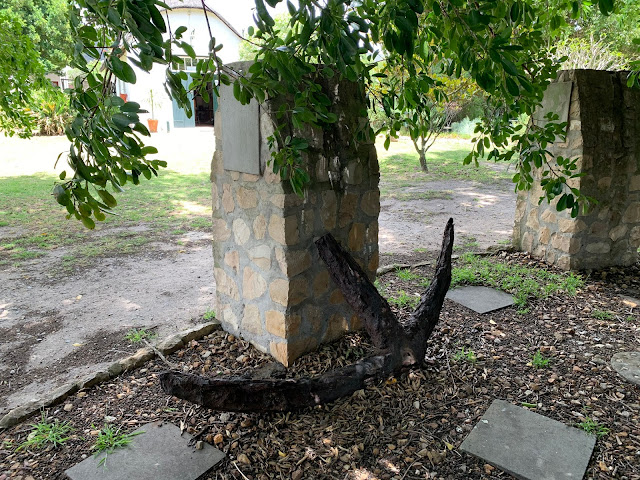TUCSIN Tsumkwe Lodge is situated in the far north-eastern side of Namibia and is part of the Nyae Nyae Conservancy, home to the Ju/’hoansi San community. It requires a well-informed approach with respect for the precious - but rare - value systems of traditional hunter-gatherer societies. Indeed, the San community can no longer survive exclusively by hunting and gathering thus, they require a local perspective for education and training.
Their strong beliefs and traditional values remain core to the San`s lifestyle and upbringing of their children. Tsumkwe is one of the last bastions where the San continues a semi-cultural lifestyle. Visitors to the area are encouraged to visit designated villages that showcase the San culture and how they have integrated with the modern way of living today
In proximity to the Nyae Nyae Pans and Khaudom National Park, TUCSIN Tsumkwe lodge is an ideal adventurous starting point to reach the Zambezi (Caprivi) Region as well as Botswana via the Dobe border post to experience the famous Okavango-Delta. Tsumkwe is still a wilderness paradise, off the beaten track!
The additional, once-off Conservancy fee of N$30.00 per person. This is a mandatory fee each visitor to the Naye Nyae Conservancy must pay while visiting or staying in the area.
Aotcha village
The village is 11 Km from Tsumkwe Lodge and can be reached with a normal 2x4 vehicle, combi, or truck.
Your Guide
Ciqae Tsamgao (Smallboy) grew up in /Aotcha village and learnt all his traditional Ju/’hoansi values, skills and practices from his father. He is a field guide with extensive experience of the bush, animals, and birds of his area. He is passionate about the preservation of the San culture and always eager to share his knowledge and heritage with his guests. He speaks and understands good English as his second language. Smallboy was part of the Ju/’hoansi team of trackers from Tsumkwe who visited France to help archaeologists identify prehistoric human tracks inside caves.
Activities
Bush walk with snaring, tracking, and collecting bush food. Game tracks in the sand will put you on the spoor of Elephant, Oryx, Kudu, Wildebeest, Hartebeest, Warthog, Giraffe, Porcupine and even birds such as Guineafowl and Sandgrouse.
Craft making in the village. Create your own bow and arrow and learn the technique of lighting a fire with “fire sticks”. Weave rope from plant fibres and how to set a snare. The ladies will demonstrate the art of beading and shaping ostrich eggshell for bangle and necklace jewellery.
Traditional dance & songs reverberate over the rhythmic drumming of feet in the sand and rustle of leg beads and pods around the campfire. Join in while the San woman playout their ritual games and the men mimic the movement of antelope and giraffe.
Traditional hunt for meat and other food sources. Full Day walking in the wild together with hunters, in search of warthog, springbok, spring hare, porcupine, or large birds. It is not guaranteed that you will have success but, the thrill of tracking and stalking potential prey is exhilarating.
Bushmen meal. Prepare and taste the bushfood San collect from the veld. When there is plenty, you will have meat and plants, or it might just be tea from tree leaves and a taste of the water root they dug up from the soil.
Traditional huts for your accommodation at the village. Dry grass and sticks provide shelter and shade in the form of a round hut. Bring your own ground mat and sleeping gear for the real outdoors experience. Spend a night in the village as the San do. You will have a dry toilet, bucket shower and wood to make a fire or to cook your food on. You must be self-sufficient with food and water, braai grid and utensils.
Compact - Half day activity for groups or guests with limited time. This is a combination of all the activities listed above, except for the hunting activity. Short bushwalk and tracking of spoors. Gathering of edible and medicinal foods, how to make rope and set snares. Back at the village visitors will view singing, dancing with the opportunity to participate in a game or two. See how the make jewellery out of ostrich egg and natural materials from the bush. The Conservancy fee will be applicable on all new bookings made from the 1st of July 2021 onwards.
TUCSIN (The University Centre for Studies in Namibia) is the owner of Tsumkwe Lodge and is proud to be the custodians of educating and uplifting the San community through vocational training and hospitality in tourism.
Aerial photo/video service/inquiries: info@traveltonamibia.com










































































